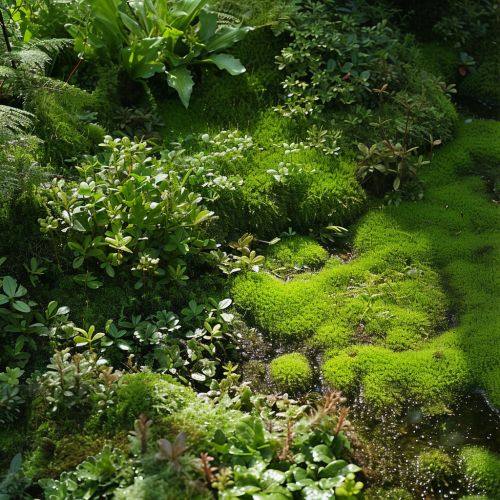Acidic fens
Overview
Acidic fens are a specific type of wetland that are characterized by their acidic, mineral-poor conditions. These unique ecosystems are typically saturated with water and dominated by mosses, particularly sphagnum species, and other acid-loving plants. Acidic fens are found in various parts of the world, including North America, Europe, and Asia, and they play a crucial role in biodiversity, carbon sequestration, and water purification.


Formation and Characteristics
The formation of acidic fens is a complex process that involves a variety of factors, including climate, geology, hydrology, and biology. They are typically formed in areas with high rainfall and low evaporation rates, which leads to waterlogged conditions. The water in these areas is often acidic and low in nutrients, due to the leaching of minerals from the surrounding soil and rock.
The most distinctive characteristic of acidic fens is their low pH, typically below 5.0. This is due to the accumulation of organic acids, primarily from the decomposition of sphagnum mosses. These mosses are able to survive in the nutrient-poor conditions of the fen by extracting nutrients from the water and releasing hydrogen ions, which acidify the water.
Other common plants in acidic fens include sedges, rushes, and various species of carnivorous plants, such as sundews and pitcher plants, which are able to obtain nutrients by trapping and digesting insects.
Biodiversity
Despite their harsh conditions, acidic fens are home to a diverse array of plant and animal species. Many of these species are specially adapted to survive in the acidic, nutrient-poor conditions of the fen. For example, many of the plants found in acidic fens have evolved mechanisms to extract nutrients from the water or from insects, as is the case with carnivorous plants.
In addition to plant life, acidic fens also support a variety of animal species. These include a range of insects, amphibians, birds, and mammals. Many of these species are dependent on the fen for their survival, and some are found nowhere else in the world.
Ecological Importance
Acidic fens play a crucial role in the ecosystem. They act as natural water filters, purifying water by trapping sediments and pollutants. They also play a significant role in carbon sequestration, as the waterlogged conditions of the fen prevent the complete decomposition of organic matter, leading to the accumulation of peat.
Furthermore, acidic fens are important for biodiversity. They provide a unique habitat for a wide range of species, many of which are rare or endangered. The loss of acidic fens due to drainage, peat extraction, and other human activities is therefore a significant conservation concern.
Conservation
The conservation of acidic fens is crucial for maintaining biodiversity and ecosystem services. This involves protecting existing fens from drainage, peat extraction, and other threats, as well as restoring degraded fens. Restoration efforts typically involve rewetting the fen, reintroducing native plant species, and managing invasive species.
